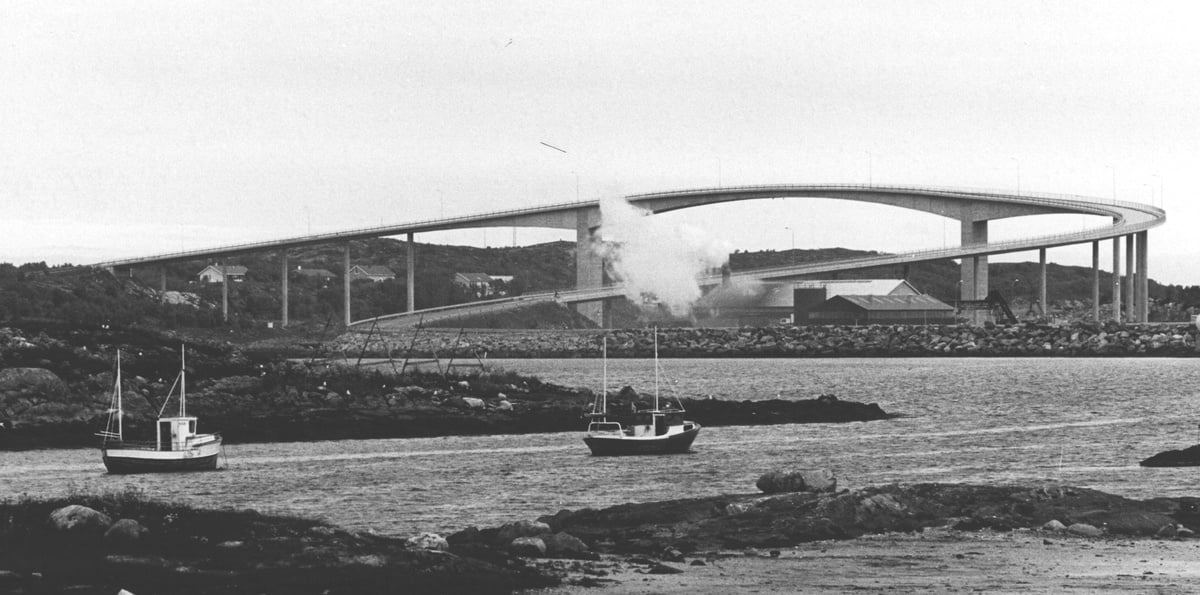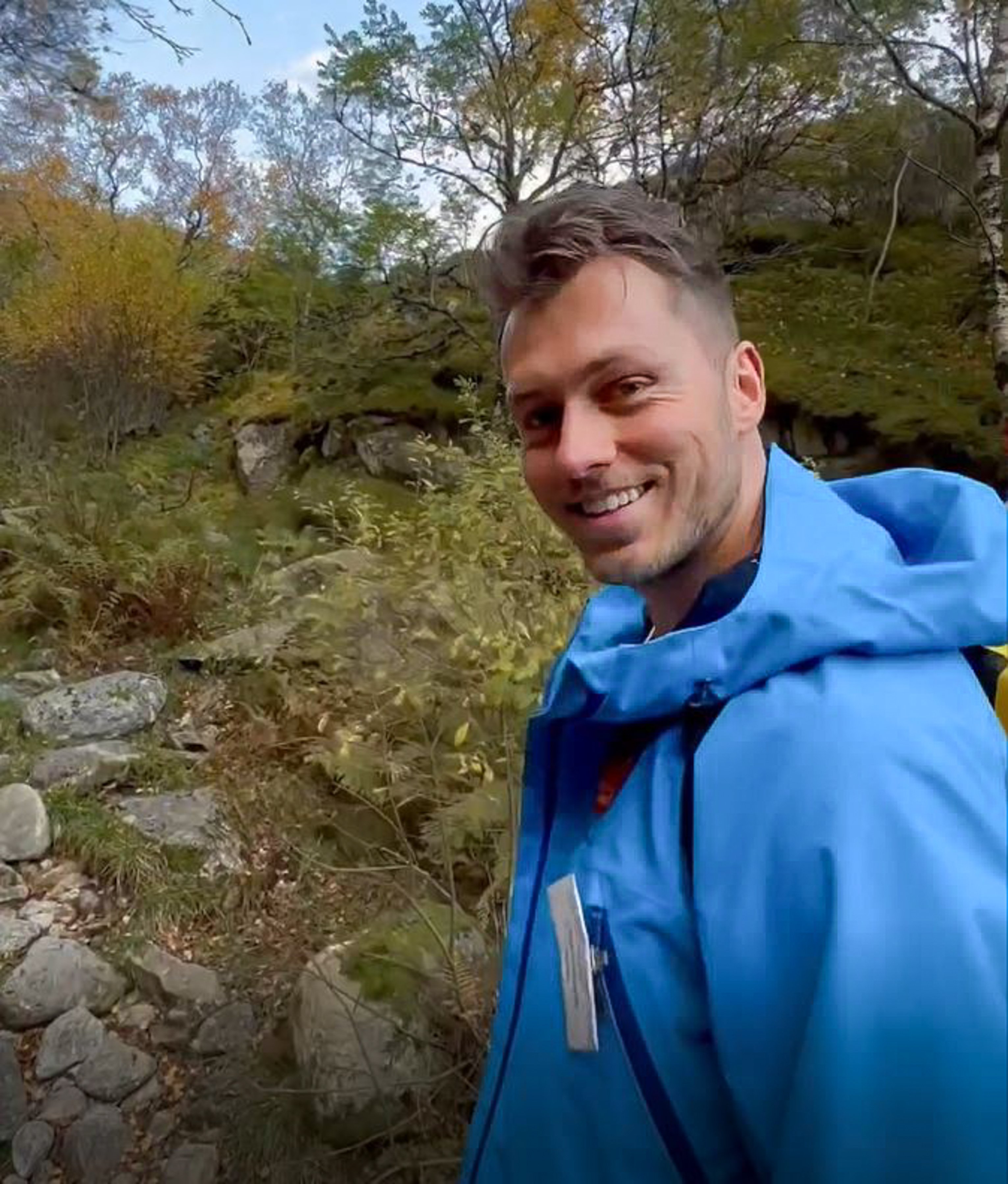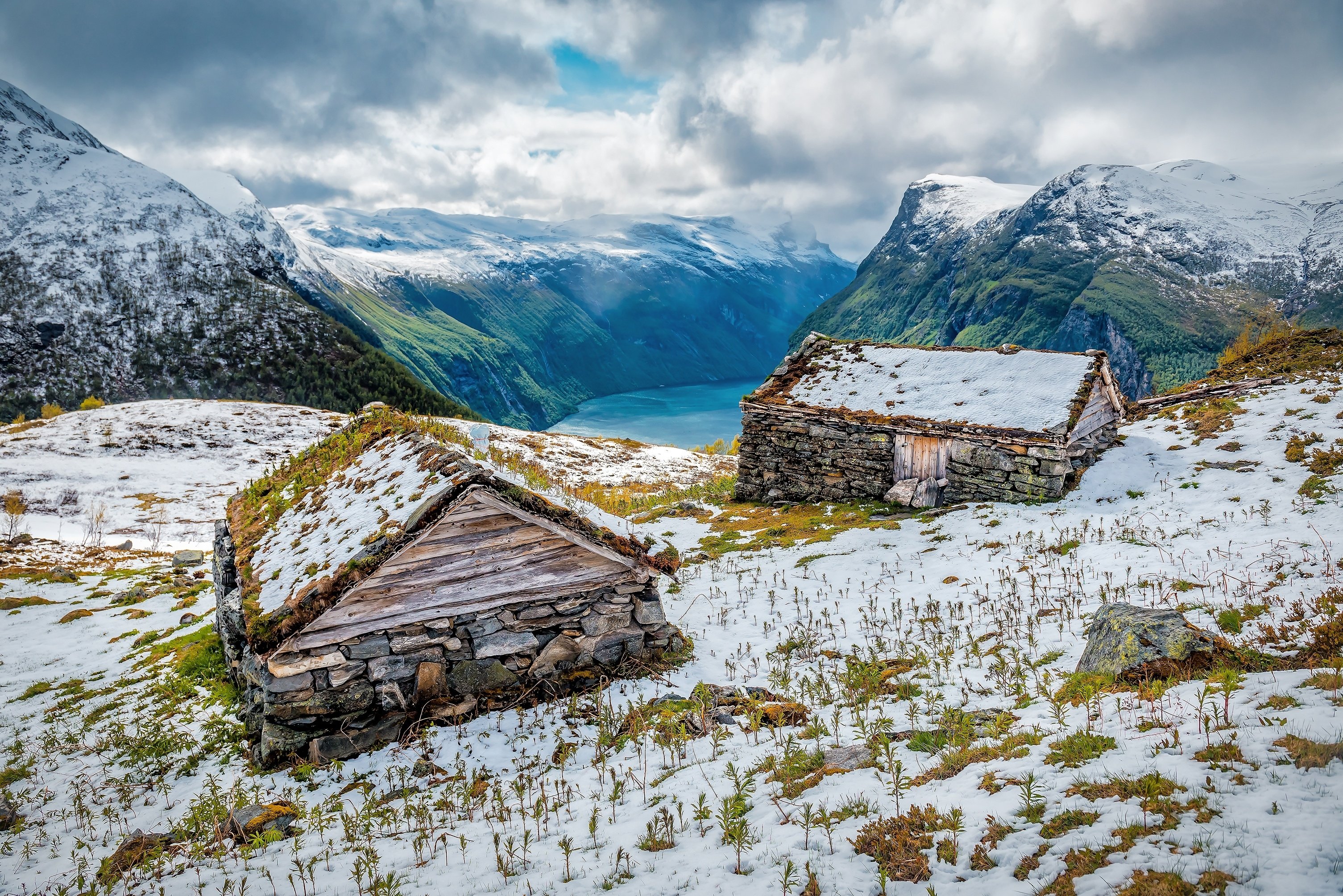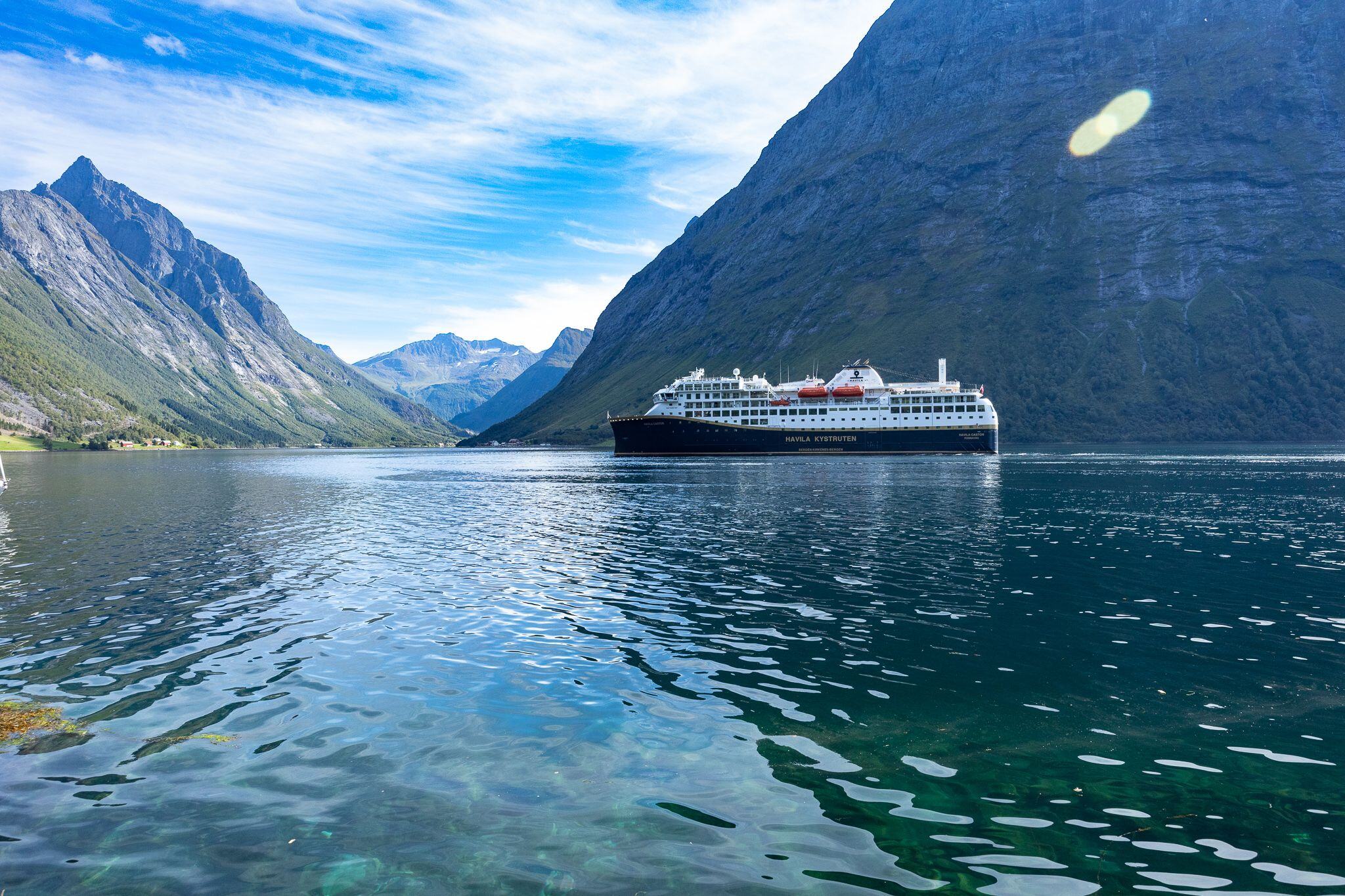The Mysterious Mountain Tunnel:
A TROLL STORY
Photo: Ronny Lien
Trolls. In Norway, we have many legends about these large, stupid, and extremely dangerous mythical creatures. One of them is about the origin of a unique mountain with a hole in the middle: Torghatten.
*Illustration generated by AI.
We disembark in the middle of Norway. Literally. The coastal town of Brønnøysund is halfway between Lindesnes in the south and North Cape, Norway’s northernmost municipality. That is also the reason why this small town, with close to 5000 inhabitants, holds one of the biggest office buildings in the whole region: Brønnøysundregistrene (The registers of Brønnøysund). The employees at this agency work for the government, managing 18 different digital registers containing important information about all kinds of Norwegian businesses.
But this is not where we will spend our afternoon.
A local tourist guide, Kristian, who is German, but he has lived in Norway for two years and now speaks three languages fluently, meets us at the quay. Together, we board a tour bus that takes us through the only roundabout in the entire town, before continuing across an impressive bridge 550 meters long over 20 spans. It was built as late as in 1979. By the way, it rises so high above the water that Havila Castor can easily pass underneath it, which she will do when we sail on tonight.

The Brønnøysund bridge was built in i 1979. Credit: Paul Andreas Røstad/Norsk Teknisk Museum.
The Brønnøysund Bridge takes us to the island, Torget, where we soon will find the famous mountain Torghatten (the Torg Hat) –
the final destination of this excursion.
The Island seems deserted, which is almost true.
“If you spot houses here, they are mostly remnants of the past. They are now used as summer holiday houses and cabins”, Kristian explains.
People who lived on the island in the past – and we are now speaking about a period lasting for hundreds of years – made a living from fishing and farming. The men were responsible for the fishing.
“In the winter, they went out on the sea in small, wooden boats to take part in the big Lofotfiske (fishing in Lofoten). In April or March, those who survived returned to help out on the farms. Meanwhile, the women took care of everything: the animals, the farming, the children, and the elderly. People lived off what they could get from the land and the sea”, the guide explains.

The guide, Kristian, during our hike up to Torghatten.
The people of Torget continued to live this way until well into the 20th Century, as the Industrial Revolution arrived later here than in the rest of Europe.
“It was, for instance, difficult to install piped water on the islands”, Kristian adds.
At last, we are there, at the foot of the mountain with the storied hole going right through it.
The stories about this granite formation are both numerous and imaginative. The most famous legend about its origins, perhaps, is that of the violent troll, “Hestmannen” (The Horse Man), and his jealous love for the troll girl “Lekmøya”, who ran away from him. We will get back to that story shortly.
The walk from the parking lot to the tunnel and through it, is not particularly long; just 20-25 minutes,
though on a steep path in uneven terrain.
We could not have asked for a better day to experience Torghatten. The natural beauty of the area we walk through has a liberating effect on both body and mind, and the view we are rewarded with once we arrive at the end of the tunnel is worth every drop of sweat underneath our woolen underwear.
Some of us stay so long that we must rush back down to the bus to make it in time for the departure.
Before finding our seats on the bus, we are each served a tasty chocolate bar, “Kvikk Lunsj”, which Norwegians typically enjoy during hikes in the wilderness.
The story of Torghatten
On the bus back, Kristian tells us that he knows of two versions of the story behind the hole in the mountain.
“In one of them, we have to go back in time, to when the Norwegian coast was full of trolls”, he begins.
Once upon a time, there was a troll king who had eight daughters. The king was very strict, so he forbade his daughters to leave their home, but one night, they left anyway, sneaking off to the beach on the island of Landegode near Bodø. There, they danced and bathed in the moonlight.
The good atmosphere, created by the sisters, was carried north by the waves, where it was sensed by the wild troll prince, Hestmannen (The Horse Man). He was known for being a good hunter, but had little luck in love. Hestmannen saw the eight sisters from a far distance and immediately fell in love with the eldest, Lekmøya, who was responsible for looking after the seven others. He decided to steal her the very same night.
The troll prince put on his armor and hunting equipment and set off on his horse in a fierce midnight ride. However, the sisters sensed him and ran away.
Exhausted, the seven younger sisters gave up and threw themselves onto the island of Alstein as the eldest fled on. As the hunter approached the Arctic Circle, Lekmøya made a giant leap across the Velfjord to Brønnøysund, about to get away. That made Hestmannen so furious, he decided that he would rather see her dead than letting her go, and so he drew his bow.
From the surrounding mountains, other trolls watched the hunt in excitement. One of them was the king of Sømnafjellet (a mountain near Brønnøysund), who saw it all from underneath the brim of his hat. When he understood what Hestmannen was about to do, he threw his hat towards the arrow hurling towards Lekmøya. The arrow pierced the hat which fell to the ground on Torget, south of Brønnøysund. Lekmøya made another giant leap, and landed on the island Leka, where she fell and dropped a bucket of hot butter that she was carrying. The butter spilled over the mountains on the northwestern side of Leka (hence the yellow color of the mountains in the area).
Lekamøya made it to the southern tip of Leka before the first rays of sunlight broke through the sky, but as all Norwegians know, trolls can’t stand the sun. Thus, both the trolls and everything they owned turned into stone.
The other version of the story behind Torghatten is the geologists’ theory; that the rock formation arose during the last ice age, around 420 million years ago.
The scientific story tells of ice and water eroding the softer rock, while the hard granite in Torghatten resisted these natural forces.
“Initially, there were two cracks in the mountain – one on each side – but then, the water hit them over and over through time, and broke loose large masses of rocks, eventually creating a tunnel. It was a long lasting process”, says Kristian, before finishing:
“Now it’s up to you to decide which story you choose to believe”.
This excursion to Torghatten takes place during spring, summer, and autumn.
Text: Josefine Spiro



